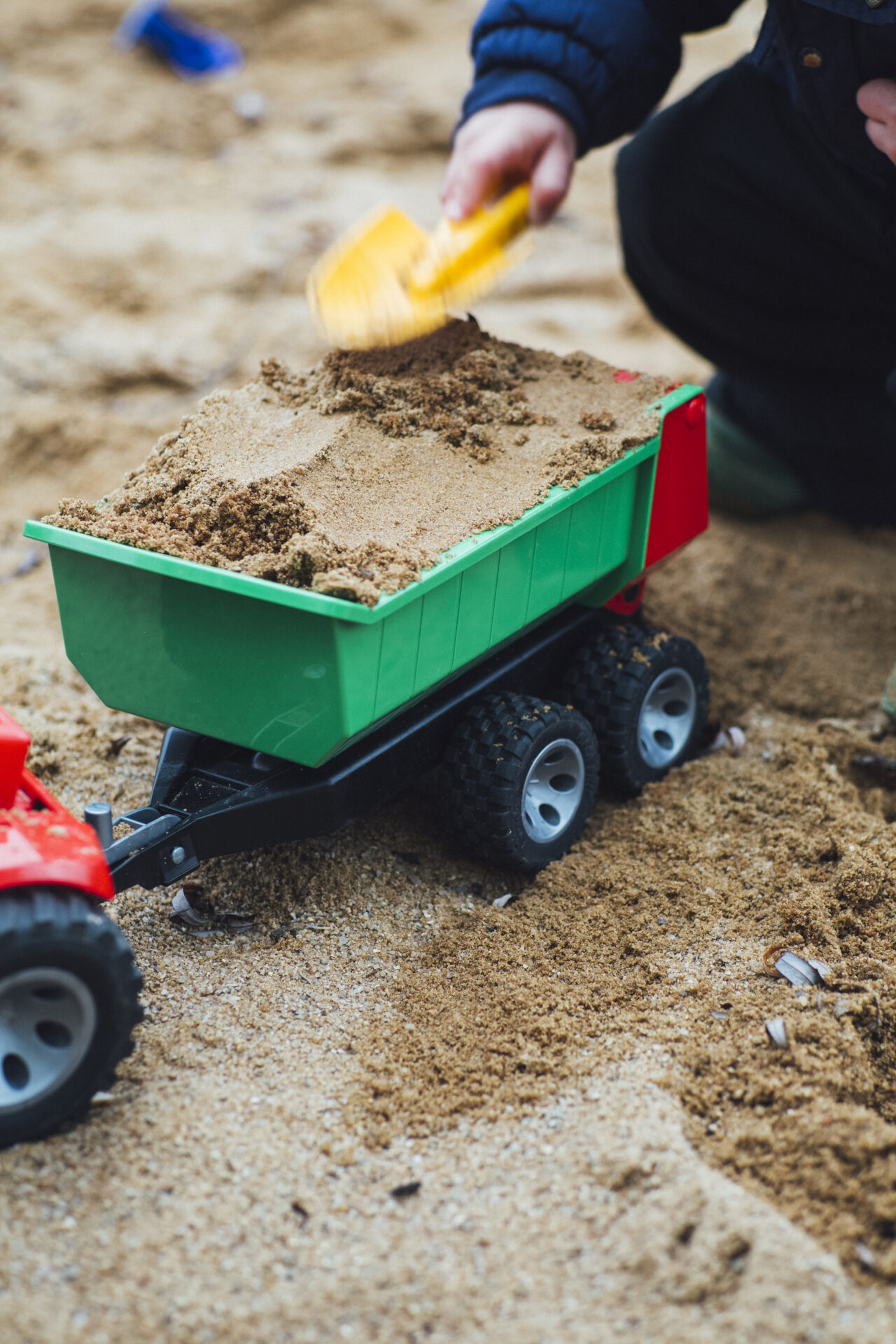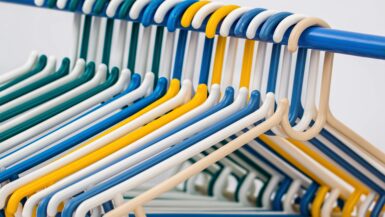In today’s world, plastic pollution has emerged as one of the most pressing environmental concerns, posing a significant threat to wildlife and their natural habitats. In this article, we delve into the profound impact of plastic-free living on wildlife conservation. We will explore the detrimental effects of plastic waste on various ecosystems, examine the importance of adopting a plastic-free lifestyle, and discuss how our collective efforts can contribute to the preservation and protection of Earth’s diverse fauna. By gaining a deeper understanding of these critical issues, we aim to raise awareness and inspire action towards a sustainable future, where both humans and wildlife can thrive in harmony.
The Role of Plastic-Free Lifestyle in Protecting Marine Life
The health of our oceans is vital to the overall well-being of the planet, as they provide essential resources and support a vast array of marine life. A plastic-free lifestyle not only reduces the burden on landfills and energy consumption but also significantly contributes to the preservation of marine ecosystems. In this section, we will examine the various ways in which a plastic-free lifestyle can positively impact marine life and discuss some practical steps to reduce our plastic footprint.
Combatting the Plastic Pollution Crisis in Our Oceans
An estimated 8 million metric tons of plastic waste enter our oceans every year, wreaking havoc on marine ecosystems and the species that inhabit them. This staggering amount of plastic pollution is responsible for the deaths of countless marine animals, who become entangled in debris or mistake plastic for food. By adopting a plastic-free lifestyle, individuals can play a crucial role in curbing this crisis and protecting the delicate balance of marine ecosystems.
Preventing Microplastic Contamination in the Food Chain
Microplastics, tiny particles of plastic less than 5mm in size, have become a significant concern for marine life as they can easily be ingested by organisms at the base of the food chain. These particles can then accumulate in the bodies of larger animals, posing a risk to their health and well-being. When humans consume seafood, they, too, are at risk of ingesting microplastics. A plastic-free lifestyle helps reduce the overall amount of plastic waste, thereby minimizing the prevalence of microplastics in the environment and protecting marine life from their harmful effects.
Supporting Sustainable Fishing Practices
Abandoned or lost fishing nets, also known as ghost nets, are another significant source of plastic pollution in our oceans. These nets continue to trap marine life, causing injury or death to various species, including endangered ones. By choosing to adopt a plastic-free lifestyle, we can support sustainable alternatives to plastic fishing gear and promote responsible fishing practices that prioritize the health of marine ecosystems.
Advocating for Policy Changes to Protect Marine Life
Individual efforts to adopt a plastic-free lifestyle can also lead to broader societal changes. As more people become aware of the detrimental effects of plastic pollution on marine life, this can drive public demand for stronger policies and regulations to address the issue. By actively participating in campaigns advocating for plastic reduction and supporting businesses that prioritize sustainability, we contribute to a collective effort towards preserving marine life and their habitats.
In summary, a plastic-free lifestyle has far-reaching benefits for marine ecosystems and the diverse wildlife that they support. By reducing our plastic consumption, we can help combat plastic pollution, prevent microplastic contamination, support sustainable fishing practices, and advocate for policy changes that protect our oceans. Each individual effort may seem small, but when combined, our collective actions can have a significant positive impact on the health of our planet and its wildlife.
How Reducing Plastic Waste Contributes to Terrestrial Wildlife Preservation
The impact of plastic pollution on terrestrial wildlife is an important yet often overlooked aspect of the plastic waste crisis. By reducing our dependence on plastic, we can significantly contribute to the preservation of terrestrial habitats and the diverse species that rely on them for survival. In this section, we will explore the various ways in which reducing plastic waste can benefit terrestrial wildlife and discuss how our individual efforts can collectively make a difference.
Preventing Litter and Habitat Degradation
Plastic litter is not only an eyesore but also a serious threat to terrestrial wildlife. Animals can become entangled in plastic debris or ingest it, leading to injury, illness, or death. The accumulation of plastic waste in terrestrial habitats can also disrupt natural processes and degrade the quality of the environment. By embracing a plastic-free lifestyle, we can help prevent litter and preserve the integrity of these habitats, ensuring that terrestrial wildlife can thrive.
Reducing the Threat of Ingestion and Entanglement
Terrestrial animals are at risk of ingesting plastic particles or becoming entangled in plastic waste. Birds, for example, may mistake plastic fragments for food, while mammals can become trapped in plastic bags or packaging materials. Reducing our use of plastic not only decreases the overall amount of waste in the environment but also minimizes the risk of these harmful encounters, protecting the health and well-being of terrestrial wildlife.
Supporting Biodiversity and Ecosystem Function
Healthy ecosystems rely on a delicate balance of biodiversity, and plastic pollution can disrupt this balance. The introduction of plastic waste into terrestrial habitats can have cascading effects on ecosystem function, such as altering soil composition or affecting the availability of resources for wildlife. By adopting a plastic-free lifestyle, we can contribute to the preservation of biodiversity and support the natural processes that underpin healthy ecosystems.
Driving Positive Change through Consumer Choices and Advocacy
Our individual efforts to reduce plastic waste can influence broader societal change. By supporting businesses that prioritize sustainability and making informed consumer choices, we can help shift market demand away from single-use plastics and towards eco-friendly alternatives. Furthermore, by raising awareness about the impact of plastic pollution on terrestrial wildlife and advocating for stricter regulations, we can inspire action at the local, national, and global levels to address this pressing issue.
Ultimately, reducing our reliance on plastic is essential in preserving the health and well-being of terrestrial wildlife. By preventing litter, reducing the threat of ingestion and entanglement, supporting biodiversity and ecosystem function, and driving positive change through our consumer choices and advocacy, we can play a crucial role in mitigating the harmful effects of plastic pollution on terrestrial habitats. Our collective actions can make a tangible difference in the fight to protect our planet’s diverse wildlife and ensure a sustainable future for all.
The Connection between Microplastics and Threatened Species
Microplastics have emerged as a pervasive environmental issue, posing a significant risk to various ecosystems and the species they support. In particular, the presence of microplastics in the environment can have detrimental effects on threatened species, exacerbating their vulnerability and hindering conservation efforts. In this section, we will explore the link between microplastics and threatened species, shedding light on the importance of adopting a plastic-free lifestyle to safeguard these vulnerable populations and promote their recovery.
Microplastic Ingestion and Its Effects on Threatened Species
One of the primary concerns surrounding microplastics is their potential to be ingested by wildlife, including threatened species. These tiny plastic particles can accumulate in the bodies of organisms, leading to a range of health issues such as digestive blockages, reduced nutrient absorption, and even toxicity. For threatened species already facing challenges such as habitat loss and climate change, the additional stressor of microplastic ingestion can further hinder their chances of survival and recovery.
Disruption of Reproductive and Developmental Processes
Microplastics can also disrupt the reproductive and developmental processes of threatened species. For instance, exposure to microplastics has been linked to reduced fertility and abnormal development in some aquatic organisms. This can have significant implications for the long-term viability of vulnerable populations, as it may impair their ability to reproduce and adapt to changing environmental conditions.
Impacts on Food Availability for Threatened Species
The presence of microplastics in ecosystems can also impact the availability of food resources for threatened species. In some cases, microplastics can displace natural prey items, leading to reduced food availability and altered feeding behaviors. This can have cascading effects throughout the food web, potentially exacerbating the challenges faced by vulnerable species and undermining conservation efforts.
Reducing Microplastic Pollution through Plastic-Free Living
Adopting a plastic-free lifestyle is a crucial step in mitigating the impacts of microplastics on threatened species. By reducing our reliance on single-use plastics and seeking sustainable alternatives, we can minimize the release of these harmful particles into the environment. Furthermore, supporting research and innovation in the field of microplastic removal and mitigation can help develop new strategies to address this pressing issue.
Advocating for Policies and Regulations to Protect Threatened Species
In addition to individual efforts, collective action is needed to address the threat of microplastics to vulnerable species. By advocating for policies and regulations that limit plastic production, encourage recycling, and promote sustainable alternatives, we can help create a more favorable environment for the recovery of threatened species. Public awareness campaigns and educational initiatives can also play a significant role in fostering a greater understanding of the link between microplastics and threatened species, inspiring further action towards their protection.
In examining the connection between microplastics and threatened species, it becomes clear that adopting a plastic-free lifestyle is essential for wildlife conservation. By reducing microplastic pollution, we can alleviate the impacts on vulnerable species, promote their recovery, and contribute to the overall health of our planet’s ecosystems. Through individual and collective efforts, we have the power to make a tangible difference in the fight against plastic pollution and the protection of Earth’s threatened species.
Sustainable Alternatives to Plastic and their Positive Effects on Ecosystems
The transition to a plastic-free lifestyle not only involves reducing plastic consumption but also embracing sustainable alternatives to plastic products. These eco-friendly substitutes not only minimize our plastic footprint but also have a positive impact on ecosystems and overall environmental health. In this section, we will explore various sustainable alternatives to plastic and discuss how their adoption can benefit wildlife conservation and the preservation of diverse habitats.
Biodegradable and Compostable Materials
One of the key sustainable alternatives to plastic is the use of biodegradable and compostable materials. These materials, such as PLA (Polylactic Acid) and PHA (Polyhydroxyalkanoates), are derived from renewable resources and can break down into natural components over time, reducing their persistence in the environment. By replacing single-use plastic items with biodegradable alternatives, we can mitigate the accumulation of plastic waste in ecosystems and minimize the risk of ingestion or entanglement experienced by wildlife.
Reusable and Recyclable Products
Another effective strategy for reducing plastic pollution is the adoption of reusable and recyclable products. By opting for items made from materials like glass, stainless steel, or bamboo, we can significantly decrease our reliance on single-use plastics. This shift in consumption patterns not only reduces the amount of plastic waste generated but also promotes a circular economy, where resources are used and repurposed more efficiently, ultimately benefiting ecosystems and wildlife conservation efforts.
Supporting Sustainable Packaging Innovations
Packaging is a major contributor to plastic pollution, and therefore, supporting sustainable packaging innovations is crucial in our quest for a plastic-free lifestyle. Alternatives such as plant-based or edible packaging materials can help reduce the environmental impact of packaging waste. By choosing products with eco-friendly packaging and advocating for businesses to adopt sustainable practices, we can contribute to a reduction in plastic pollution and its associated threats to wildlife and their habitats.
Encouraging the Use of Natural Fibers
Many everyday items, such as clothing and textiles, contain synthetic fibers that can contribute to microplastic pollution. By opting for natural fibers like cotton, hemp, or wool, we can reduce our contribution to this pervasive issue. Natural fibers are not only an eco-friendly alternative to synthetic materials but also have the potential to positively influence ecosystems and support wildlife conservation by reducing the prevalence of microplastic pollution in the environment.
Community-Based Initiatives and Collaborative Efforts
Finally, the transition to a plastic-free lifestyle can be facilitated through community-based initiatives and collaborative efforts. By participating in local programs, such as plastic-free challenges, zero-waste workshops, or community clean-up events, we can amplify the impact of our individual actions and foster a collective movement towards sustainable living. These collaborative efforts not only raise awareness about the importance of reducing plastic consumption but also contribute to tangible improvements in the health of ecosystems and the well-being of wildlife.
The adoption of sustainable alternatives to plastic is a critical aspect of plastic-free living and has far-reaching benefits for ecosystems and wildlife conservation. By embracing biodegradable materials, reusable and recyclable products, sustainable packaging innovations, natural fibers, and engaging in community-based initiatives, we can actively contribute to the preservation of ecosystems and the diverse species that inhabit them. Each small change in our daily habits can have a cumulative positive impact, helping to create a more sustainable future for both humans and wildlife.
The Influence of Community-Driven Plastic Bans on Wildlife Habitats
As the importance of plastic-free living becomes more widely recognized, community-driven efforts to curb plastic pollution have gained momentum. One such effort involves plastic bans, which are enacted at the local or regional level to restrict the use of single-use plastics and promote eco-friendly alternatives. In this section, we will explore the influence of community-driven plastic bans on wildlife habitats and discuss how these initiatives contribute to the overall goal of wildlife conservation.
Reducing Plastic Pollution in Critical Habitats
Community-driven plastic bans have the potential to significantly reduce plastic pollution in critical wildlife habitats. By limiting the availability of single-use plastics and encouraging the use of sustainable alternatives, these bans can help prevent the accumulation of plastic waste in ecosystems. This not only benefits the health and well-being of individual species but also supports the overall integrity of these habitats, allowing wildlife populations to thrive.
Protecting Vulnerable Species from Plastic-Related Threats
Many species, particularly those that are threatened or endangered, face heightened risks from plastic pollution. Community-driven plastic bans can help protect these vulnerable species by reducing the prevalence of plastic waste in their habitats, thereby minimizing the risk of entanglement, ingestion, or other harmful encounters with plastic debris. As a result, these bans can play a vital role in the conservation of vulnerable species and the preservation of biodiversity.
Creating a Ripple Effect of Environmental Awareness
The implementation of community-driven plastic bans often involves collaboration among various stakeholders, including local governments, businesses, and citizens. This collaborative process can foster a greater sense of environmental awareness and responsibility within the community, motivating individuals to adopt more sustainable practices in their daily lives. As more people become invested in plastic-free living, this can create a ripple effect of positive change that extends beyond the initial scope of the plastic ban and benefits wildlife habitats at a broader scale.
Supporting the Development of Sustainable Infrastructure
As communities enact plastic bans, there is often a concurrent push for the development of sustainable infrastructure. This may include the establishment of recycling programs, the promotion of reusable alternatives, or the creation of incentives for businesses to adopt eco-friendly practices. By supporting the development of such infrastructure, community-driven plastic bans can contribute to the long-term sustainability of wildlife habitats and the overall health of ecosystems.
Fostering Global Collaboration for Wildlife Conservation
Finally, the success of community-driven plastic bans can inspire similar initiatives in other regions or countries, fostering global collaboration in the fight against plastic pollution. As more communities join the movement towards plastic-free living, the collective impact of these efforts can have profound effects on wildlife habitats worldwide. By sharing best practices, resources, and knowledge, communities can work together to safeguard wildlife populations and ensure the long-term preservation of diverse ecosystems.
In summary, community-driven plastic bans hold significant potential to positively influence wildlife habitats and contribute to wildlife conservation efforts. By reducing plastic pollution, protecting vulnerable species, fostering environmental awareness, supporting sustainable infrastructure development, and encouraging global collaboration, these initiatives can play a vital role in the broader movement towards a plastic-free future, where both humans and wildlife can coexist harmoniously.





Leave a reply